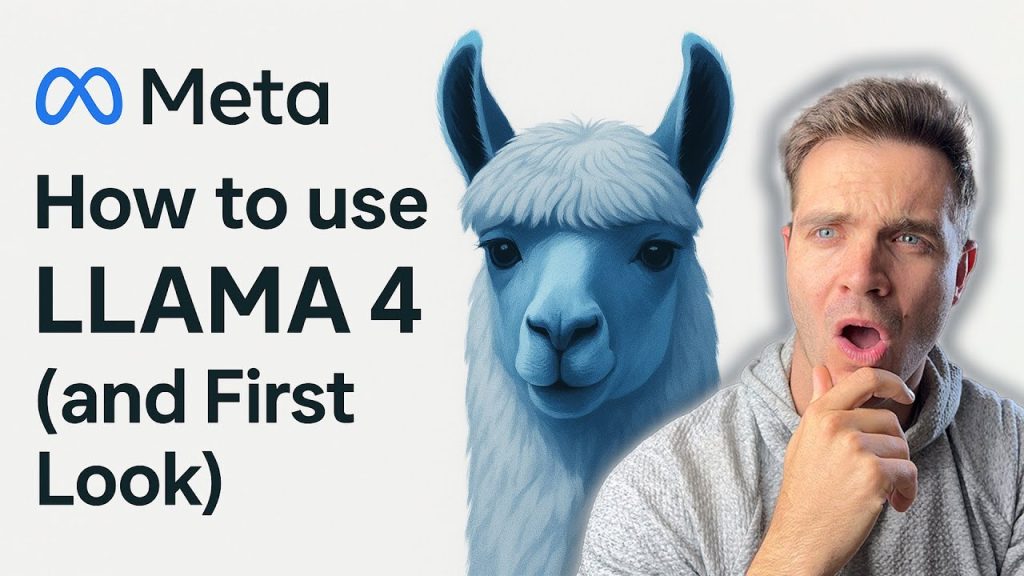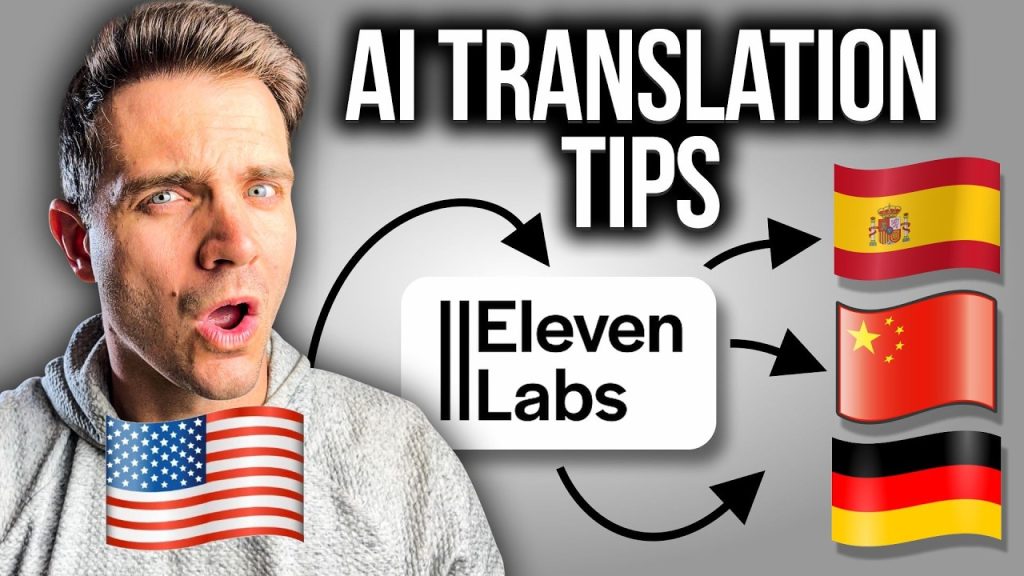In my latest deep dive into AI advancements, I explore Meta’s groundbreaking Llama 4 models which represent a significant leap forward in open-source AI technology. These revolutionary models utilize a unique Mixture of Experts architecture that delivers impressive performance while maintaining efficiency, potentially changing how businesses and developers approach AI implementation. You might be wondering, “How to Use LLAMA 4 For Free?” and I will share that with you in this article.
The release of Llama 4 introduces three distinct models—Scout, Maverick, and the upcoming Behemoth—each offering different balances of performance, context length, and computational requirements to serve various use cases.
In my comprehensive video, I demonstrate Llama 4’s capabilities, compare it to leading models like GPT-4o and Claude, and show you how to start using these powerful tools:
Understanding the Llama 4 Family: A Revolutionary Approach to AI
Meta’s Llama 4 release includes three distinct models, each with different capabilities and use cases. The Scout model represents the smaller, more efficient option with 109 billion total parameters (17 billion active) and an incredible 10 million token context window—the largest available in any public model. The Maverick model offers greater intelligence with 400 billion total parameters (still using 17 billion active parameters) but a smaller 1 million token context. The yet-to-be-released Behemoth promises to be Meta’s most powerful offering with 288 billion active parameters and a staggering 2 trillion total parameters.
What makes these models truly revolutionary is their Mixture of Experts (MoE) architecture. Unlike traditional dense models where all parameters are activated for every token processed, Llama 4 intelligently activates only the necessary fraction of parameters for each specific task. This architectural approach delivers significantly higher performance while reducing computational requirements for both training and inference.
Key Features That Set Llama 4 Apart
Groundbreaking Context Window
Perhaps the most impressive technical achievement of Llama 4 is the Scout model’s massive 10 million token context window. This dwarfs competitors like Gemini (2 million tokens) and enables entirely new use cases where enormous amounts of information can be processed simultaneously. This feature is particularly valuable for analyzing large documents, research papers, or multiple files in a single prompt.
Native Multimodal Capabilities
Llama 4 models are designed with native multimodal understanding, meaning they can process both text and images through the same parameter set. This eliminates the need to chain separate text and vision models together, creating a more seamless experience for applications that require understanding of different data types.
Multilingual Support
The models support 12 languages including English, Arabic, French, German, Hindi, Indonesian, Italian, Portuguese, Spanish, Tagalog, Thai, and Vietnamese. This expanded language support makes Llama 4 more accessible to global users and developers.
Improved Handling of Contentious Topics
Meta has tuned Llama 4 to refuse answers to contentious questions less frequently than previous models. According to Meta, the model can now respond to more debated political and social topics that previous Llama models couldn’t address, potentially positioning it as a more balanced option between heavily filtered models and completely unfiltered alternatives.
Performance Benchmarks: How Does Llama 4 Compare?
According to the LLM Arena leaderboard, Llama 4 Maverick ranks impressively high, sitting just behind Gemini with 1,470 points. The performance-to-cost ratio is where Llama 4 truly shines—input token costs are approximately 5% of GPT-4o’s, making it extraordinarily cost-effective for high-volume applications.
In Meta’s official benchmarks, Llama 4 performs exceptionally well on various tests, particularly excelling at the “needle in the haystack” task where Scout demonstrates nearly zero error rates even with massive context windows. This indicates excellent information retrieval capabilities over extended contexts.
The models also demonstrate strong reasoning capabilities, although direct comparisons to GPT-4o’s reasoning weren’t shown in the current benchmarks.
How to Use LLAMA 4 For Free – Accessing and Using Llama 4
There are several ways to access Llama 4 models:
- Meta AI – The simplest method is visiting Meta’s chat interface at meta.ai, which provides a user-friendly way to interact with the models (though currently limited to a 32,000 token context window)
- OpenRouter – Offers free access to Llama 4 models through an OpenAI-compatible API
- GroqCloud – Provides high-speed inference for those seeking performance
- Hugging Face – For developers wanting to download and self-host the models
The open-source nature of Llama 4 is perhaps its most significant advantage over competitors. Unlike closed models from OpenAI or Anthropic, you can download and self-host these models, giving you complete control over your AI infrastructure and data.
Real-World Testing: Content Creation and Coding
Blog Post Generation
In my testing, I asked Llama 4 (via OpenRouter) to generate a 5,000-word blog post about AI automation for entrepreneurs. The model immediately began producing content without the typical “I’ll help you with that” preamble often seen in other models. This direct approach could make it more suitable for integration into production workflows.
However, the output fell short of the requested length, producing approximately 1,000 words initially. When asked to make it longer, it continued seamlessly without objection, but still didn’t reach the full requested length. Compared to Claude 3.7 Sonnet or GPT-4o, the content generation capabilities weren’t as impressive in this initial test.
Coding Capabilities
When asked to create an HTML game, Llama 4 attempted to produce a tower defense game but the implementation wasn’t fully functional. The code generation speed was moderate—neither exceptionally fast nor slow—but the quality and completeness of the code didn’t match what I’ve experienced with other leading models like Claude 3.7 Sonnet or Gemini Pro.
Image Generation
Llama 4’s multimodal capabilities extend to image generation, which I tested by asking it to create an image of a chef plating a meal. The generation was impressively fast—much quicker than GPT-4o’s image generation—and even included animation capabilities.
However, the image quality was noticeably less photorealistic than GPT-4o’s output. The Llama 4 image had a more animated, video-game-like appearance with some logical inconsistencies in how objects were being held. While impressive for an open-source model, it doesn’t yet match the photorealism of proprietary alternatives.
The Impact of Llama 4 on the AI Landscape
Meta’s approach with Llama 4 represents a strategic shift in how AI models are developed and distributed. By open-sourcing these powerful models, Meta is positioning AI as more of a commodity rather than a proprietary advantage. This approach encourages widespread adoption while making it harder for companies like OpenAI to maintain premium pricing for their closed models.
The pricing implications are particularly significant. With input token costs at a fraction of proprietary alternatives, Llama 4 could dramatically change how developers and businesses approach token usage. Many applications that were previously cost-prohibitive due to large context requirements could now become economically viable.
For entrepreneurs and developers, this means access to powerful AI capabilities without the high costs associated with proprietary models. It also provides greater control and flexibility since the models can be self-hosted rather than accessed solely through cloud APIs.
Should You Switch to Llama 4?
While Llama 4 represents a significant advancement in open-source AI, whether it’s the right choice depends on your specific needs:
- Cost sensitivity: If token costs are a major concern in your AI implementation, Llama 4’s efficiency makes it highly attractive
- Context length requirements: For applications that need to process massive documents or multiple files simultaneously, Scout’s 10 million token context is unmatched
- Data privacy concerns: The ability to self-host eliminates concerns about sending sensitive data to third-party APIs
- Image generation needs: If photorealistic image generation is critical, proprietary models still have an edge
For many automations that currently use paid models like GPT-4o or Claude 3.7 Sonnet, Llama 4 may offer a compelling alternative—especially if you’re operating at scale where cost efficiencies become significant. The performance-to-cost ratio makes it particularly attractive for high-volume applications where small per-token savings add up quickly.
Looking Forward: The Future with Llama 4
Meta’s approach with Llama 4 suggests a future where powerful AI becomes more accessible and affordable. As more developers incorporate these models into their workflows and applications, we can expect to see a proliferation of AI-enhanced tools that leverage the extensive context windows and multilingual capabilities.
The upcoming Behemoth model, with its 2 trillion parameters, promises to push capabilities even further. If it delivers on its benchmarks, it could potentially challenge or surpass the most powerful proprietary models while maintaining the open-source advantage.
For those interested in exploring Llama 4, I recommend starting with Meta’s official interface at meta.ai or OpenRouter to get a feel for the models’ capabilities before deciding whether to invest in self-hosting or integration into production workflows.
Resources for Getting Started with Llama 4
- Meta AI: https://meta.ai (requires Facebook/Instagram login)
- OpenRouter: Provides API access to Llama 4 models
- Hugging Face: Download the models for self-hosting
- Meta’s official blog post: Provides detailed information about the models’ architecture and capabilities
As Llama 4 continues to evolve and the community develops more tools and implementations around it, its impact on the AI landscape will likely grow. Whether you’re an AI enthusiast, developer, or business owner looking to implement cutting-edge technology, Llama 4 represents an important milestone in making powerful AI more accessible, efficient, and versatile.


